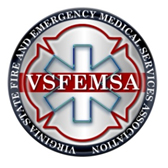User Guide

Community Fire Safety Coalition
Responsibility for the fire safety of your community always falls directly on the local fire department. To ensure your organization has the greatest impact on this critical need, you should include the entire community as you plan your strategies to make your community fire safe. The simplest way to accomplish this and involve a cross-segment of your population is to take the lead role in the formation of a Community Fire Safety Coalition. In addition to department members, the department should reach out to citizens, business and industry leaders, school leaders, clergy, media representatives, law enforcement and civic leaders to belong to this valuable group.
In addition to helping deliver fire safety messages to your entire community, this group can assist in raising funds, recruiting members and performing many nonoperational duties and tasks for your organization. The Community Fire Safety Coalition becomes your organization’s advocate, by speaking and acting as an organized entity on your behalf.
Another key element to you Community Fire Safety Coalition is performing a Community Risk Assessment. This essential survey helps ensure your department is delivering the correct fire safety message to the proper segment of your community. Utilizing data from several sources, including the National Fire Incident Reporting System, the National Fire Protection Association, local hospital discharge records and department-based smoke alarm audits, will provide your organization with a working base to determine where to start your program development and delivery plan.
Scheduling Guidelines
Delivering fire safety programs does not have to be complicated, time consuming or expensive, as the data you gather from your community risk assessment will lead you toward both your fire problem, as well as your primary target audience. In many instances, the groups you are targeting are already established; take advantage of delivering programs to school groups, day care centers, service clubs, businesses, churches and senior groups as just a few examples.
Unfortunately, in most of your citizens’ collective busy lifestyles, coming to your fire station to request fire safety information for their family does not occur on a consistent basis. Your challenge is to determine the locations where your citizens gather, as mentioned in the earlier examples. Target these locations and groups as you are planning your delivery schedule; much of the hard work may already be complete.
Participant and Instructor Guidelines
The primary participant and teaching components of the program are included in this module. There are 21 Participant Guidelines, each with a corresponding Instructor Guideline. The subjects include a wide array of fire safety topics, modules for age-specific groups and a home safety inspection guideline. The fire safety topics can be mixed and matched to customize a program according to the fire safety problem you are targeting or to the request of the group you are teaching.
The guideline files are available to print on the companion program CD. These guidelines are also available on the program web site through the Virginia State Fire and EMS Association website: www.vsfemsa.org. The website includes an electronic version that can be customized with your department contact information.
Smoke Detector Installation Program
One of the greatest impacts your department can have on the fire safety of your citizens is ensuring every home is protected by a properly operating smoke alarm. The easiest way to accomplish this is to establish a Smoke Alarm Installation Program. This program will have an impact in several areas. One, you should check the smoke alarm in every home where you respond to an incident. Two, you should establish a smoke alarm request process for citizens. Three, your department should target areas in your community that have been identified User Guide 5 www.vsfa.org as having a higher incidence of fires and fire injuries. Your department should work with local funders to provide smoke alarms to be installed by your organization throughout your community. These smoke alarms should become a standard piece of equipment carried on all of your apparatus, available for needed installations at each home you respond to for an incident, as well as available for request and during targeted installation campaigns.
Media Relations
Creating a working relationship with the various members of the local media, including print reporters and representatives from television and radio outlets, will prove to be beneficial to your department in many situations. The information in this module will guide your organization through the steps required to establish this working partnership before an emergency incident occurs.
Simple strategies, such as creating a Public Safety Coalition, distributing safety tips through department press releases and involving and inviting your media representatives to planned department functions, are all proactive programs that will build a positive working relationship. It should be your department’s goal to build a relationship with the various media contacts in your community through non-emergency activities, including the various fire prevention activities referenced in the Community Fire Safety Operational Guide.
Appendices and Resources
This module includes example documents referenced in the individual modules and the working templates your department will be able to customize for their individual use. Once downloaded and customized by your department, you will be able to create letters, public service announcements, participant and instructional guidelines and media press releases to utilize in your community, which all include your personal department name and contact information.
The templates are available to download from the companion program CD, as well as the program web site through a link on the Virginia State Fire and EMS Association website: www.vsfemsa.org. The site includes electronic versions that can be customized with your department name and contact information.